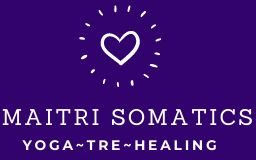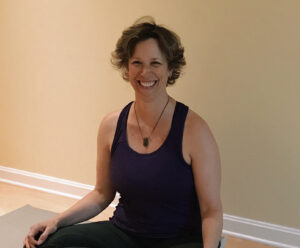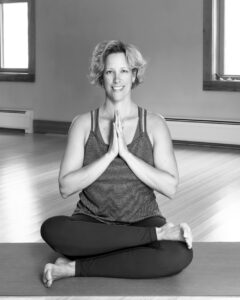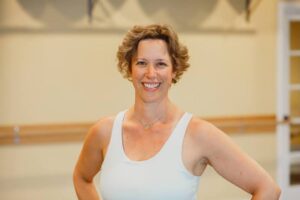(image courtesy of Canva.com)
“Dumb Fox!”
My then two year old’s first profanity. In the car. At the three way stop just one mile from our home. I’d exclaim at that intersection regularly over the next ten years or so.
Frustrated. Irritated. Impatient. Judgmental.
That sympathetic nervous system fight response, a.k.a. road rage in this case, and my repeated exclamation that rhymed with “dumb fox,” that in fact remained “dumb fox” from that day forward!
Patience comes from the Latin”pati” meaning to suffer, to endure. However yoga teaches us that
Patience is NOT about sucking it up, toughing it out, or grinning to bear it.
The Sanskrit word for this quality, and one of yoga’s yamas, or invitations; vows; values; virtues; or as I like to call them “bright qualities,” is kṣamaࠢ. Kṣamaࠢ, pronounced “ksha maaa” means patience; forbearance; tolerance; forgiveness; equipoise. The word itself helps us “feel” the shift from impatient to patient. Try the sound “ksha.” It feels contracted in the face and throat, like a sneeze or a cough. Then the word finishes with the long, slow, smooth sound “maaaa.”
Patience is so valuable to creating more balance in the heart mind (emotions and thoughts); making space for healing; and especially for connecting with others.
Consider patience as a way of being for yourself; your family; your neighbors; and those “other” drivers on the road. The yogi’s search for clear seeing of reality has really helped me be much more generous and patient with other people. Now when I get triggered at an intersection (because that happens, driving is still dangerous after all!) I can practice yoga on the spot and generate a new story; a more generous story for that person in the “other” car. Maybe they have precious cargo with them like a new baby or puppy; perhaps they are delivering a wedding cake; or they just dodged a squirrel and are still distracted. Whatever! Turning to the practice of kṣamaࠢ, to look beyond my mental story, beyond my road rage habit, I can offer grace instead. And patience leaves me peaceful, rather than rageful.
Patience is an especially important practice for these challenging and divisive times. If we want change towards healing and growth, human connection across differences, we need to become patient. To offer others the benefit of the doubt, and to offer that same generosity of spirit to yourself.
On the spot yoga practice for Patience:
Next time you find yourself bored; uncomfortable; or with a fast mind in a slow environment, waiting…give this a try:
- Celebrate! You noticed impatience. You can’t change what you don’t recognize, so noticing is very important.
- Pause. Maybe by placing your attention on a few breaths; or the ground supporting your feet; or notice something beautiful in your environment: a pleasant sound or an expansive sky. What is the simplest practice that creates a pause for you?
- Reflect. Notice that you are safe right now, at this moment. Then ask yourself, “Do I want to keep feeling this flavor of anger? Do I want to keep telling this story?”
- Take aligned action. What is a more loving story I can tell? Can I offer the benefit of the doubt to myself or this other person? How can I be more generous right now?
The research shows (2007 Schnitker & Emmons)…
That those people who are more patient with others are more satisfied in their lives. Those more patient with their own personal difficulties are more hopeful. Those more patient with the daily hassles of life are less depressed. And those who are patient in all three areas are kinder, more compassionate, cooperative, forgiving, and generous. Patience ignites even more of yoga’s “bright qualities” in you and that generosity of spirit ignites the bright qualities in others!
“We need more light about each other. Light creates understanding, understanding creates love, love creates patience, and patience creates unity.” ~Malcolm X.
Remember: this post is for informational purposes only and may not be the best fit for you and your personal situation. It shall not be construed as medical advice. The information and education provided here is not intended or implied to supplement or replace professional medical treatment, advice, and/or diagnosis. Always check with your own physician or medical professional before trying or implementing any information read here.





